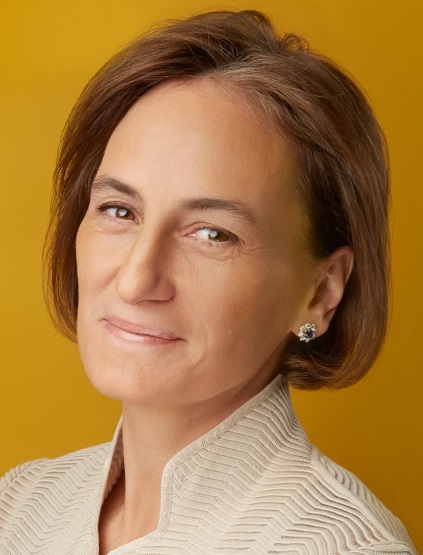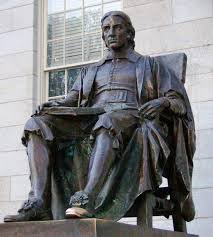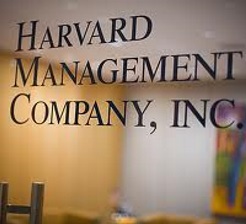Amy Falls: Meeting Harvard’s plan B
by charles | Comments are closed11/15/2016
Amy Falls: Meeting Harvard’s plan B
In late July, Stephen Blyth stepped down as head of Harvard Management Company; then things happened fast.
By mid-September, a hire seemed imminent and HMC was said to have winnowed the field down to just two: Narv Narvekar of Columbia and Amy C. Falls of Rockefeller University.
Mr. Narvekar, who got the job, was an obvious candidate, according to us as well as many others. He had run a major Ivy endowment for a decade, consistently outperforming Harvard. He was the right age and had the right credentials. Everyone in our world of investment management knew and respected him.
See: https://www.charlesskorina.com/?p=3970
Ms. Falls was not quite so well known. She had been chief investment officer at Rockefeller University in New York for five years, but that’s a smaller ($2 billion AUM), non-Ivy institution.
Rockefeller University has a small footprint on Manhattan’s upper East Side, and no undergraduates at all (although it does confer a few PhD degrees every year). It’s primarily a world-class biomedical research center (including a long roster of Nobelists). They do important work, but don’t have the cultural or investment heft of a Harvard or Yale.
But, on closer inspection, it was clear that Ms. Falls was not only an accomplished investment manager, but also an ambitious and formidable networker who was pre-vetted and well-regarded at Harvard. Serendipitously, she had been tapped for a seat on the Harvard Management Company board last September. Back then Mr. Blyth was still firmly in the saddle at HMC, ten months before the job suddenly fell open.
Paul J. Finnegan, who sits on the Corporation board as well as chairing HMC, welcomed her aboard last Fall, saying: “She joins at a particularly important time as we implement a new portfolio and organizational strategy.” Clearly, Mr. Finnegan, who had himself just succeeded to the HMC chairmanship, had a hand in her appointment and regarded her as an ally in the refurbishment of the endowment.
Reliable sources tell us that Harvard tried to recruit Mr. Narvekar to succeed Mohammed El-Erian as endowment head. But he declined then for personal reasons, and the job went to Jane Mendillo.
We think Harvard expected Mr. Narvekar to be more amenable this time around, which is why they were pretty confident they could fill the job quickly. But, as battle-scarred head-hunters, we can testify that even “done deals” can inexplicably fall apart. You always need a Plan B. In this case, that was Amy Falls, who was an attractive candidate in her own right.
She had a Harvard degree, was a HMC board member, and had already been vetted by Mr. Finnegan. And, in the diversity-sensitive world of Ivy politics, it didn’t hurt at all to have a woman publicly in the mix of candidates.
Coffee with Amy:
Ms. Falls graciously offered me a sitdown when I was in Manhattan last month, and I was eager find out what isn’t in her official bio.
She’s a direct and confident woman; and I enjoyed our wide-ranging conversation about her life, times, and profession.
Amy Falls is a doctor’s daughter who grew up in Lake Forest, Illinois, just outside Chicago. She went east as a teenager to attend the elite Massachusetts prep school officially designated the Phillips Academy (but which is often referred to as “Phillips Andover,” or just “Andover.” (This is partly to distinguish it from the equally-tony Phillips Exeter, but partly we think just to mystify the unwashed.) Andover is just a stone’s throw from Harvard, geographically, socially and academically; and is one of the “feeder” schools which furnish a disproportionate number of Harvard freshmen.
Ms. Falls, however, chose to major in history at Georgetown University, and only later circled back to Harvard for a graduate degree (MPP in International Development) at the Kennedy School of Government. One of the interesting points on her resume, in fact, is that she has no degree in finance, unlike the ruck of her colleagues who boast name-brand MBAs.
Read More »Harvard gives Narv the nod
by charles | Comments are closed10/12/2016
As all the world now knows, Harvard has selected Columbia’s Nirmal P. “Narv” Narvekar as the new head of Harvard Management Company.
His name had been bandied about as a prime candidate for weeks. We discussed it ourselves in our August 29 newsletter.
See: https://www.charlesskorina.com/harvard-management-company-size-really-matter/
Reportedly, a few big-endowment CIOs were not interested in the job. Fortunately, Mr. Narvekar was.
He is an exemplary investment manager and, for what it’s worth, we think Mr. Finnegan and his board made a good choice.
The Columbia endowment and its two amigos:
In 2002 Columbia University set up a new investment management company (CIMC) with its own board, and hired Mr. Narvekar as its founding president.
They plucked him from the University of Pennsylvania investment office where he’d been a managing director for four years, tasked with diversifying into private equity and other alternatives.
Previously, he’d spent 14 years with J.P. Morgan, including six years as managing director in their equity derivatives group. He’s a Phi Beta Kappa graduate in economics from Haverford College, and his MBA is from Penn’s Wharton School.
It’s a sterling resume, but people don’t hire resumes they hire performance and Mr. Narvekar’s performance numbers are outstanding, as we’ll see below.
And, we’re sure he’s been offered a salary commensurate with that performance. We’ll also discuss that important topic.
Shortly after he arrived at CIMC, Mr. Narvekar reached out to Peter B. Holland, an old colleague who had worked with him in JP Morgan’s derivatives group, bringing him in as chief investment officer. The two men have worked closely together for more than twelve years, and to excellent effect.
We were unsurprised to see Mr. Holland elevated immediately to the top job at CIMC as Mr. Narvekar departs. Despite all the talk about the importance of succession-planning, few organizations really have a proper successor on the launch pad. Columbia, fortunately, did; and we expect to see no hiccups in the organization they jointly built.
A makeover for HMC?
We (and many others) have written at length about Harvard’s difficulties and will spare you any more rehashing.
We had our say here: https://www.charlesskorina.com/harvard-endowment-hmc-time-reassess/
But the hire of Mr. Narvekar raises some obvious questions about the structure and direction of HMC going forward.
The previous two HMC presidents were hired under the aegis of the late James F. Rothenberg who chaired the HMC board until his sudden death last summer. It fell to the new chairman – Paul J. Finnegan – to run the search that found Mr. Narvekar. And the selection of a new president by a new chairman may involve more than just redecorating a single office.
Mr. Narvekar leads about 20 staffers at CIMC. When he arrives in Boston he’ll be greeted by over 200 HMC employees. That 10-to-1 ratio neatly underlines the situation he’ll be stepping into.
We think there will be at least some chipping away at Harvard’s “hybrid” model with its attendant high headcount, but probably not a revolution. We’re sure Mr. Narvekar and Mr. Finnegan have already discussed this unavoidable and delicate topic.
Read More »OCIO update: more firms, another $24 billion
by charles | Comments are closed09/29/2016
Our latest OCIO list (Outsourced Chief Investment Officer) just expanded by three firms since our September sendout, with UBS and PNC Bank rejoining the ranks and Highland Associates in Birmingham, Alabama reaching out for inclusion.
With 74 firms on the list as of November, 2016, total outsourced CIO assets (managed with full discretion) now total $1.367 trillion, increasing by $240 billion since we published our last list in 2014.
(Our full OCIO list of firms for 2016 is presented at the end of this newsletter.)
Our friends at Chief Investment Officer Magazine think that OCIO assets grew 17 percent year-over-year from 2014 to 2015, and almost 10-fold (860 percent) over the eight years 2007-2015. That eight-year growth ($91 billion to $873 billion) implies an annual growth rate (CAGR) of about 30 percent, but with growth beginning to slow down in 2014.
See: http://www.ai-cio.com/2016-Outsourced-Chief-Investment-Officer-Buyers-Guide/
(Pedant alert: 860 percent growth over eight discrete periods gives us 33 percent annualized. Continuous compounding gives us about 28 percent. The underlying data is too soft for over-precision, so we split the difference.)
Our own independent surveys for 2014 and 2016 imply that recent year-over-year growth is now only about 9 percent. So we agree with Chief Investment Officer Magazine that OCIO growth seems to be decelerating.
Nine percent annualized is still pretty brisk, but it’s not that much higher than the expected growth of managed global assets overall. It suggests that the OCIO niche may be maturing, with a lot of the low-hanging fruit having been plucked.
My unscientific survey of OCIO managers suggests they’re a little more conservative in their own estimates. They typically tell me they’re looking for 5 percent growth, but of course each firm has its own view.
They tell me that the number of RFPs is definitely up, but that potential clients aren’t always sure whether they want a fully-outsourced solution, a consulting/management hybrid, or a traditional straight-consulting arrangement.
The number of firms in this niche, however, seems to have plateaued and even fallen off a little in recent years.
Our list has grown from forty-five outsourcers six years ago in 2012 to seventy-nine in 2014 to seventy-one today.
Some have chosen to leave the business for one reason or another. Those include: Fortress, Fiduciary Research & Consulting, Salient Partners, and UBS. A few others either failed to respond to repeated requests or asked not to be listed.
And, at least three firms – Pacific Global Advisors, Marco Consulting, and Jeffrey Slocum & Associates – have been gobbled up by bigger firms: Goldman Sachs, Segal Rogerscasey, and Pavilion Financial respectively. So their AUM lives on under another label.
As headhunters, we’re not surprised to see that steady growth in outsourced AUM leads to a steady flow of management talent into the OCIO firms.
From the point of view of potential clients, the number of firms competing hard for their business is a good thing. Not only are the vendors competitive on price, they are building their bench with top talent.
Read More »The Harvard Management Company: Size Really Does Matter
by charles | Comments are closed08/29/2016
[Note: we published this piece on August 29, before Harvard announced its hire of N.P Narvekar and its disappointing returns for FY2016]
In asset management, as in other endeavors, size really does matter.
Bigger is better. But growth in AUM drives growth in headcount and complexity; and that can overwhelm existing structures and challenge management.
A few weeks ago in “Crunch Time for the Harvard Endowment” we referred to HMC’s hunt for a new “CIO” although, technically, the top job at HMC is “CEO.”
See: https://www.charlesskorina.com/crunch-time-harvard-endowment/
In this niche that’s often a distinction without much difference, and we tend to use “CIO” generically; but for Harvard there’s a real challenge behind that equivocation.
A CEO, in proper corporate-speak, manages people, structure, and processes. A CIO, of course, develops and executes investment strategy to maximize returns.
The HMC board hopes to find a candidate who is both an outstanding investment strategist and a proven, effective manager – a CIO and a CEO.
Read More »Crunch Time for the Harvard Endowment:
by charles | Comments are closed08/04/2016
[Note: we published this piece on August 4, before Harvard announced its hire of N.P Narvekar and its disappointing returns for FY2016]
The hunt is underway for a new CEO at the Harvard Management Company. And chairman Paul Finnegan and his board intend to get it right this time.
Counting interims, they’ve now had six CEOs at their shop since Jack Meyer departed in 2005, and mostly mediocre returns to show for it.
After Mr. Meyer’s departure it took a one-year search to land Mohamed El-Erian, who then lasted less than two years before he moved to PIMCO. Now, Stephen Blyth has departed after just 18 months on the job.
It looks like this search will be briefer. Some sources say they may have someone aboard by September. But in any case the board needs to set a new course with a new leader.
Last month, before Mr. Blyth’s resignation was announced, we looked at Harvard’s performance (especially versus Yale), and suggested that it might be time for HMC to undertake a major re-think of its business. Maybe their vaunted “hybrid model” is no longer viable.
See: https://www.charlesskorina.com/harvard-endowment-hmc-time-reassess/
We did not expect to be revisiting the subject so soon, but events have overtaken us. So here we are again.
What’s on the board’s mind?
Mr. Finnegan, who became HMC chairman late last year, is a private equity investor and we note that Harvard also announced — in an unusual year-ahead notice in May — that David Rubenstein of PE giant Carlyle Group would be joining the Harvard Corporation board in 2017.
See: http://harvardmagazine.com/2016/05/harvard-appoints-david-m-rubenstein-senior-governing-board
Add to this a statement from Mr. Finnegan on July 27 that HMC going forward would lean more on outside money managers “who have the resources, skill and experience.”
Taken all together, this portends a shift — or at least a tilt — from HMC’s “hybrid” structure to something closer to the Yale “purebred” model. And Yale, incidentally, has been cleaning Harvard’s clock in private equity for years.
See: https://www.charlesskorina.com/wrangling-unicorns-yale-celebrates-vc-heroes/
If internal management of public-market assets, which was Mr. Blyth’s forte, is to be de-emphasized, then it would make sense to look at successful big-endowment CIOs who are already executing such a mostly-outsourced and alternatives-heavy model.
Read More »




